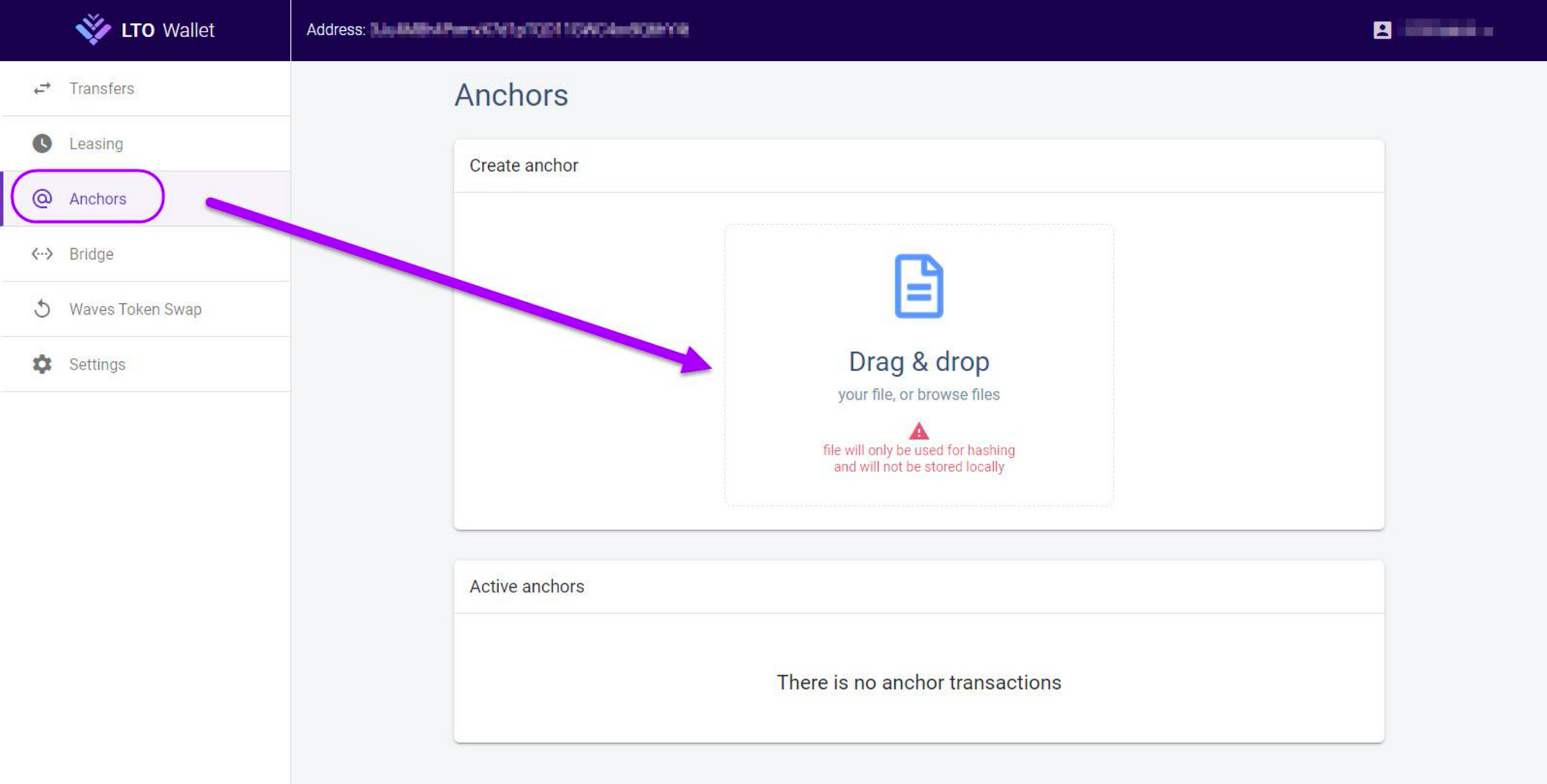B2Basics 1: Blockchain and Anchoring with LTO
Anchoring provides a simple and cheap way to notarize documents, timestamp and verify data. It’s one of the most fundamental uses of any blockchain / decentralized public ledger.
The first step is to create a digital fingerprint of the data or document that (along with a timestamp) can be stored on the blockchain and be used to compare against, verify and authenticate. The fingerprinting process — transforming data into a fixed size string using a particular algorithm — is called hashing.
And anchoring is the process of taking that hash / fingerprint and storing it within a transaction on the blockchain. By adding a hash on the blockchain, data becomes tamper-proof. It becomes possible to prove the timestamp and show the document hasn't been modified. The data becomes anchored.
LTO Network started in 2014 as a software suite for building documents and digital signing. Today, we are taking over the world by making blockchain integration easy in every organization
And there’s a growing need for organizations to have secure audit trails / immutable timestamps for documents.
Learn more: LTO Network toolkit for anchoring and creating decentralized workflows.
Partners Anchoring on LTO Network
• Triall: Using LTO Network's blockchain infrastructure to anchor COVID-19 clinical trial research data, enhancing the safety, security and reliability of research data in the digital era. Read more.
• SignRequest: Introducing immutable PDFs anchored on the LTO Network blockchain. Over 1 million business documents are signed every year through the SignRequest app. Read more.
• VIDT: By introducing immutable art certificates anchored on the LTO Network blockchain, purchasers can trust a piece of art is the original. V-ID has 30+ enterprise clients that use the certification platform integrated with LTO Network. Read more.
• NEN: The Dutch Standardization Institute (and respected member of ISO) introduced smart certificates to facilitate on the spot verification. Updates and changes to the certificates are automatically linked to QR codes, which are re-recorded (hashed) on the blockchain platform. Read more.
Try it yourself: How to verify a document on LTO Network

- Use wallet.lto.network to anchor any document to the LTO Network Public chain. Simply drag and drop!
- Visit verify.lto.network to test hashing and verify a document.
- Ready for more? Set up an anchoring node for bulk anchoring.
LTO Network: Private data, public consensus
What makes LTO Network unique is its hybrid blockchain architecture, geared for decentralized workflows using the private layer (where private data is shielded from the outside world) while still relying on public consensus to ensure integrity.
The public chain also defines the fee for each transaction type.
And with LTO Network’s mainnet upgrade (and tokenomics update) in early 2022, it will become more affordable to anchor high volumes of data with the introduction of batch transactions. These allow multiple transfers combined into a single mass-transfer transaction to reduce tx costs. All designed to enable our partners to scale up their usage in a cost-efficient way.
Speaking of which, by taking the non-conventional choice of hybrid blockchain, LTO Network has also side-stepped the scalability issues seen with other blockchains.
We’re ready to grow together.
The LTO Network team is here to help investigate how your organization could benefit from blockchain technology.
Schedule a demo to learn more.
